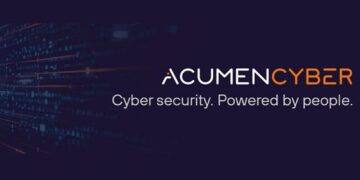The Cybersecurity Resource Allocation and Efficacy (CRAE) Index reports that spending continued to increase, but cybersecurity efficacy has waned in Q3 compared to previous quarter pandemic business continuity and work-from-home initiatives. More than half of organisations (52%) consider phishing attacks or ID and credential theft as the top concern in Q3 2020, according to data released by Pulse Secure and CyberRisk Alliance. Additionally, more than one-third of respondents (38%) across all regions experienced unauthorised or improper resource, application or data access, with North American organisations (39%) significantly more likely than Europeans (26%) to have encountered related data exfiltration, anomalous or malicious traffic.
The CRAE Index, created by CyberRisk Alliance (CRA) and underwritten by Pulse Secure, is a quarterly, time-series tracker that measures the overall focus and direction of North American and European organisations’ cybersecurity activities, spending, and perceived progress over time. Scores above 50 indicate a spending or efficacy increase and scores below 50 show a spending or efficacy decrease.
Compared to the previous quarter, overall resource allocation and spending on IT security rose (66.5 in Q2 compared to 66.7 in Q3). In contrast, overall efficacy dropped (75.8 in Q2 compared to 74.2 in Q3), indicating that the increased expenditure did not result in a higher perception of improved security results. In North America, spending remained flat between Q2 and Q3 (66.5), but with a greater allocation towards reactive versus proactive security allocation. In contrast, the European CRAE Index showed an increase in quarterly spending and allocation (68.4 in Q3 compared to 66.5 in Q2) that focused on more proactive measures, with a similar reduction in efficacy (dipping to 74.4 Q3 from 74.9 Q2). The score was higher (by 1.9 points) for Europe than for North America, possibly propelled by organisations advancing the European Union’s GDPR safeguards.
Healthcare resource allocation and spending growth accelerated in Q3 by 5.8 points to an index score of 69.6 points. The expansion was driven by protection measures, which jumped 8.7 points to an index score of 75.2, including cybersecurity training and awareness programmes, developing processes to secure digital and physical assets, and purchasing or implementing cybersecurity technology. Additionally, the “Protecting” Efficacy Index rose by 7.6 points to 80.6, mostly driven by related protection efficacy, where healthcare organisations shared increased confidence in the effectiveness of their resource and investment allocations since Q2.
Healthcare industry respondents highlighted budgetary constraints, a trend continuing from Q2, as their primary challenge to combat rising threats and address elevated risks from untrained staff and employee carelessness with highly sensitive data. In terms of cybersecurity challenges over the last quarter, phishing and identity/credential theft were most impactful for healthcare respondents (54%), with external compliance and audit events (33%), and endpoint malware and IoT security issues (32%) rounding out the top three.
Financial services resource allocation and spending dipped to 67.4 from 68.2 in Q2, along with efficacy that declined 3.2 points in the quarter (from a 77.3 to 74.1 index score). These changes in index levels indicate a slowdown in the spending growth and waning optimism in security effectiveness during Q3. The only efficacy component that increased was “Recovering,” which includes developing/executing recovery plans and procedures, coordinating communications during recovery activities, and implementing improvements based on lessons learned. Respondents cited an increase in security efficacy response, which jumped 2.9 points, suggesting increased growing optimism about recovery plans and future improvements.
Challenges for this sector in Q3 included increased external threats, business disruption, data theft and corruption, leaks, and lack of new system innovations. Phishing was the top cybersecurity threat (59%), with web and cloud attacks (48%) and internal compliance and audit events (41%) rounding out the top three.
Manufacturing resource spending rose 1.2 points to 67.8, and efficacy rose 2.3 points to 75.1 quarter over quarter. There was an above-average point increase of 3.8 in “Responding,” which indicates that firms are focused on developing response strategies, policies and controls to prevent future attacks. The manufacturing industry’s 3.7-point increase in efficacy of “Identifying” is consistent with increased confidence in improved asset management plans, risk management strategies and governance programs for this sector.
Work from home requirements due to the pandemic impacted manufacturing firms, with many respondents indicating positive changes to improved security policies within their organisations. Even with such improvement, phishing and ID/credential theft was the top cybersecurity threat (52%), with internal compliance and audit events (45%) and endpoint and IoT threats (42%) rounding out the top three for manufacturing.
High Tech and Business Services spending dropped 3.8 points to 64.1, as did efficacy by 7.3 points to 72.4. All five NIST components as relayed by survey respondents saw slower growth for spending allocation and efficacy in Q3, with the largest drop of 12.3 points occurring in efficacy for “Protecting,” which includes cybersecurity training/awareness, developing processes to secure digital and physical assets, and purchasing or implementing cybersecurity technology.
Even though respondents noted increased attacks in number and scope, as well as increased sophistication and adaptability of adversaries, this industry sector saw slower growth in every sub-index category — indicating a softening resource expansion. Interestingly, phishing ranked as the lowest concern (42%), with endpoint malware and IoT security (46%), web or cloud application attacks (45%), and insider threats and anomalous users (44%) rounding out the top three.
The CRAE report noted that: “Overall, three out of five NIST sub-index component index readings (“Identifying,” “Protecting,” and “Recovering”) rose in Q3 as organisations reported increased resource and spending allocations for proactive cybersecurity approaches, such as process improvements, system and software upgrades, and increased employee awareness and training. Efficacy sentiment for four out of five activities also increased, although at a slower pace in Q3. “Recovering” efficacy expanded slightly faster on average, reflecting increased confidence of respondents about their initiatives to recover from information security events and breaches.”
“This is a useful piece of cybersecurity research that gives IT and information security leaders directional insight into what is happening on the ground from a peer and industry perspective,” said Mike Riemer, chief security architect at Ivanti, which acquired Pulse Secure. “The findings highlight that organisations are furthering security investments in proactive technologies to address expanded threats due to increased remote workplace requirements, and that security practitioners need to further their focus on optimising processes and controls to turn the tide of efficacy confidence.”
Download a free copy of the full report, as well as abridged regional and industry spotlights, here.






